Slovenia E-commerce Market Size
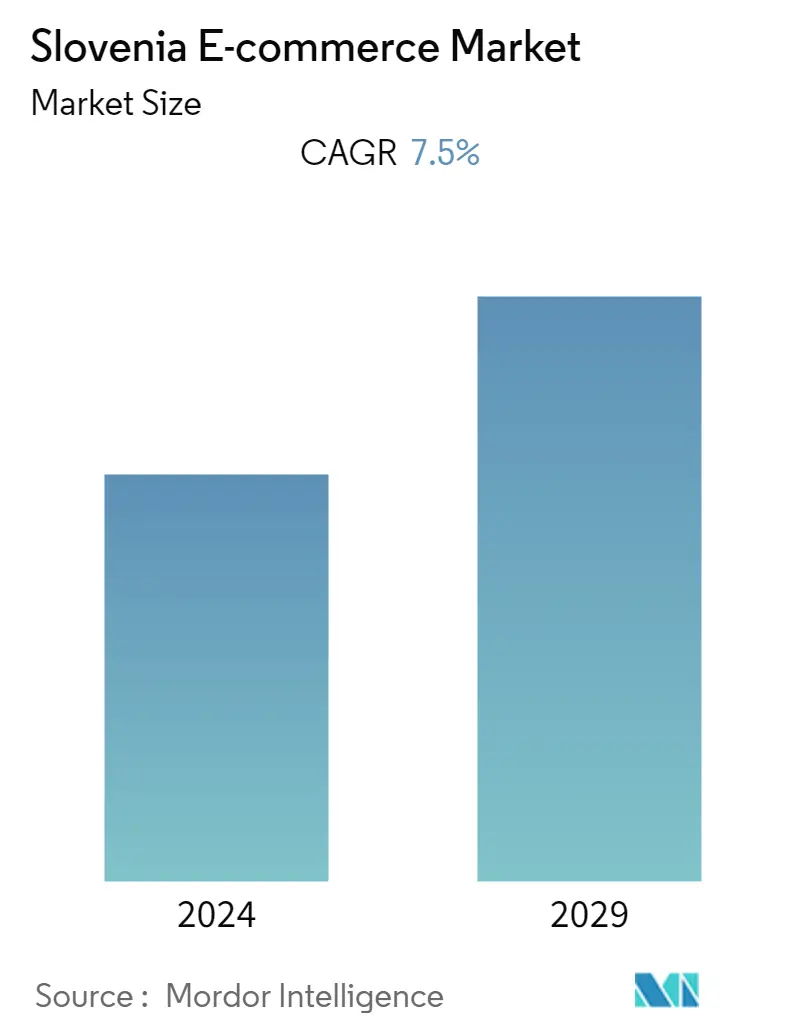
| Study Period | 2019 - 2029 |
| Base Year For Estimation | 2023 |
| Forecast Data Period | 2024 - 2029 |
| Historical Data Period | 2019 - 2022 |
| CAGR | 7.50 % |
| Market Concentration | High |
Major Players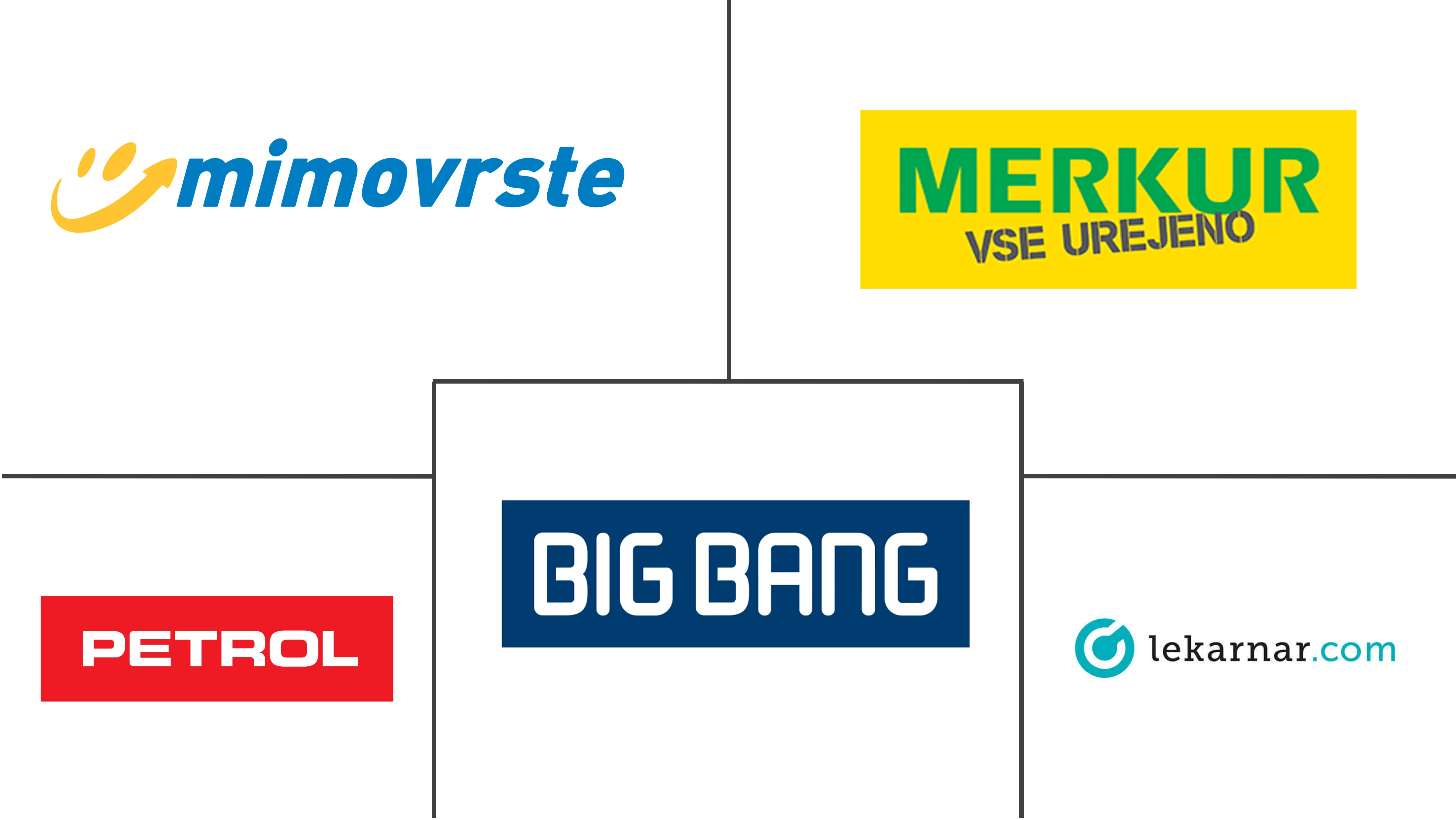
*Disclaimer: Major Players sorted in no particular order |
Need a report that reflects how COVID-19 has impacted this market and its growth?
Slovenia E-commerce Market Analysis
The Slovenia e-commerce market is witnessing a growth rate of 7.45% over the forecast period from 2022 to 2027. The European E-Commerce market has been recording robust growth over the last few years, offering exciting opportunities for online retailers across various sectors in Slovenia. The outbreak of the Covid-19 pandemic created lucrative opportunities for the Slovenia E-commerce market due to the nationwide lockdown imposed by the government.
- According to International Trade Administration, In recent years, online consumer goods sales have increased significantly in Slovenia, as has the use of credit cards for both in-person and online transactions. Practically all Slovenians aged 10 - 74 and web in Slovenia pages almost all organizations with ten or more employees have access to broadband internet.
- Additionally, As per the statistics, over 48% of Slovenian internet users make monthly web transactions, doubling the average purchase amount. Food and beverage, automobile, pet food, and product categories have seen the most rapid expansion in Slovenia; 76% of websites have produced online versions of mobile-friendly web pages.
- Moreover, the pandemic created numerous opportunities for E-Commerce to thrive in Slovenia. Consumers have no choice but to adapt to internet buying due to social distance and time constraints on providing numerous services and products. One of the biggest advantages of internet sales in 2020 was that customers could shop from the comfort of their own homes.
- According to the Statistical Office of the Republic of Slovenia, 81% of businesses with ten or more employees have a website. However, many internet retailers, particularly supermarket stores, were unprepared for the surge in consumer demand caused by the COVID-19 outbreak.
Slovenia E-commerce Market Trends
This section covers the major market trends shaping the Slovenia E-commerce Market according to our research experts:
Domestic E-Commerce is Expanding Rapidly in Slovenia
- Slovenian E-Commerce is rapidly expanding due to decreasing prices and a growing variety of items. Customs duties are not charged on online transactions made within the EU. Despite the foreign competition, nearly half of Slovenian internet shoppers (49%) adhere to domestic online stores. www.ceneje.si, www. mimovrste.si, www.nakupovanje.net, www.enaa.com, www.mercator.si, and www.trgovine.net are amongst the most popular Slovenian E-Commerce sites. As more Slovenians shop online for goods and services from other EU nations and the United States, cross-border E-Commerce is rising.
- Slovenians shop on all major worldwide E-Commerce sites, including www.amazon.com, while many Slovenians choose to save duties by purchasing from EU-based websites of popular American online companies such as Amazon Germany. The most popular online commodities are electronics, fashion products, housing equipment, publications, pharmaceuticals, health supplements, trip bookings, and airline tickets.
- Slovenia is also a SEPA member (Single Euro Payments Area). It is a European agreement that makes handling non-cash payments in the European Union easier. These payments are subject to similar legal regulations, making payments between member countries easier and more efficient. It also boosts the transaction's security.
- In Slovenia, Business-to-Business (B2B) eCommerce is still in its infancy, with many businesses relying on older systems with outmoded processes and local sales channels. Slovenia's vehicle sector is growing its B2B commerce infrastructure, with many sales to Germany, France, and Italy.
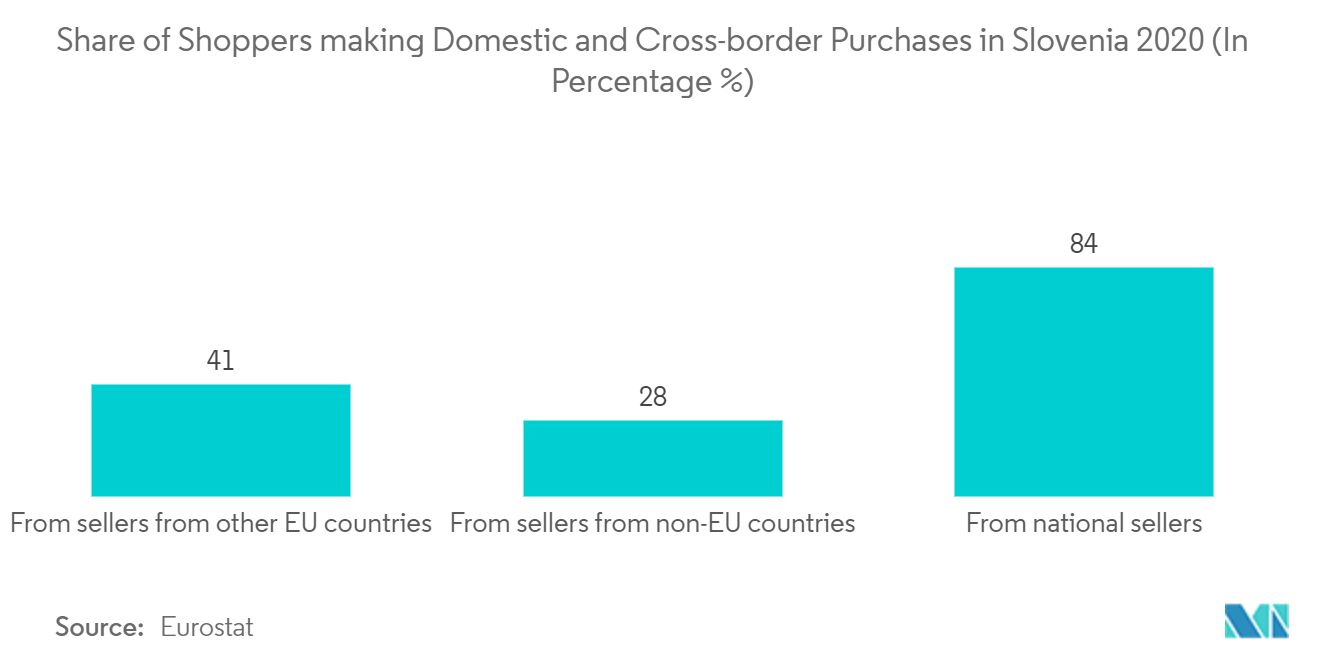
Fashion Holds the Largest Share in E-Commerce
- Fashion is the most significant portion of the Slovenian E-Commerce market. Fashion is perhaps the most popular segment in Slovenia, contributing to around 30% of all eCommerce income, as stated by the E-commerce Germany blog.
- Regarding preferred E-Commerce stores, these are all Slovenian services or stores, not just Slovenian domains. The undisputed leader is marketplace mimovrste.com, and second place is merkur.si, a DIY store. Bigbang.si, an eCommerce site that sells electronic equipment, is ranked third.
- According to the E-commerce Germany blog, Slovenes prefer to pay with prepaid cards, which account for up to 63 percent of all transactions. Mobile phones come in second with a slightly lower score, accounting for 17% of the payment market. Then there are credit cards (10%) and electronic wallets (9%).
- According to E-commerce news, cash on delivery is still the most preferred payment method in Slovenia. Due to a lengthy history of cash transactions, this is the case. Approximately 40% of consumers in Slovenia currently pay with cash when their items are delivered. On the other hand, electronic payments have become more popular in recent years. Credit cards account for about a fifth of all purchases, up 12% from 2020.
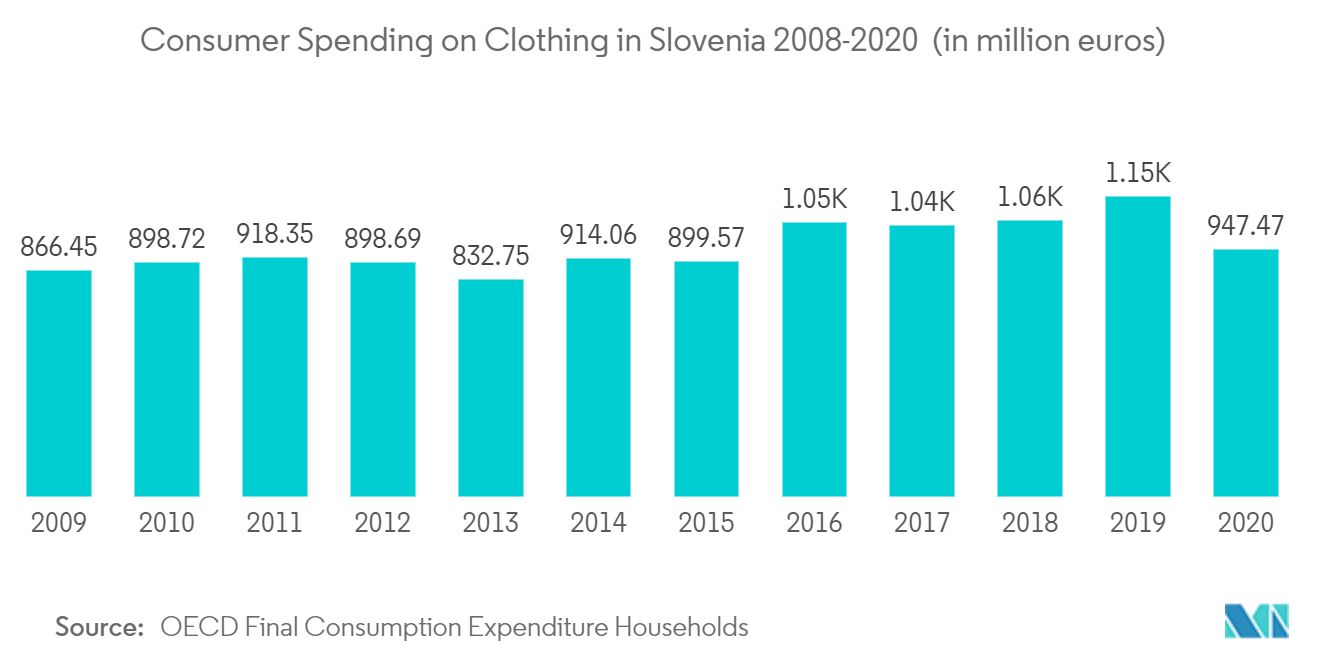
Slovenia E-commerce Industry Overview
The degree of competition in Slovenia's e-commerce market is high due to the presence of many market players. The number of local and global brands in the e-commerce market has increased, leading to high competition. These players are initiating various product launches, partnerships, and collaborations to gain a competitive advantage in the market.
- April 2022 - Auchan is looking to bolster its presence in southeastern Europe in cooperation with Hungarian-American investment fund Indotek, with a bid for Slovenian E-commerce player Mercator. Mercator is also looking for an investor who would participate in developing, financing and constructing its new BTC central logistics center in Ljubljana.
- October 2021 - Worldline, a payments and transactional services firm based in Europe, has announced a partnership with Livescale, a pioneer in adopting live shopping. Worldline and Livescale will collaborate to create an embedded commerce solution with seamless in-video checkout capabilities across social media and websites. The technology will enable 150 online payment methods, allowing buyers in European nations like Slovenia to pay in any way they want.
Slovenia E-commerce Market Leaders
Mimovrste d.o.o.
Merkur Trgovina d.o.o.
Big Bang d.o.o.
Petrol d.d.
Lekarna Nove Poljane
*Disclaimer: Major Players sorted in no particular order
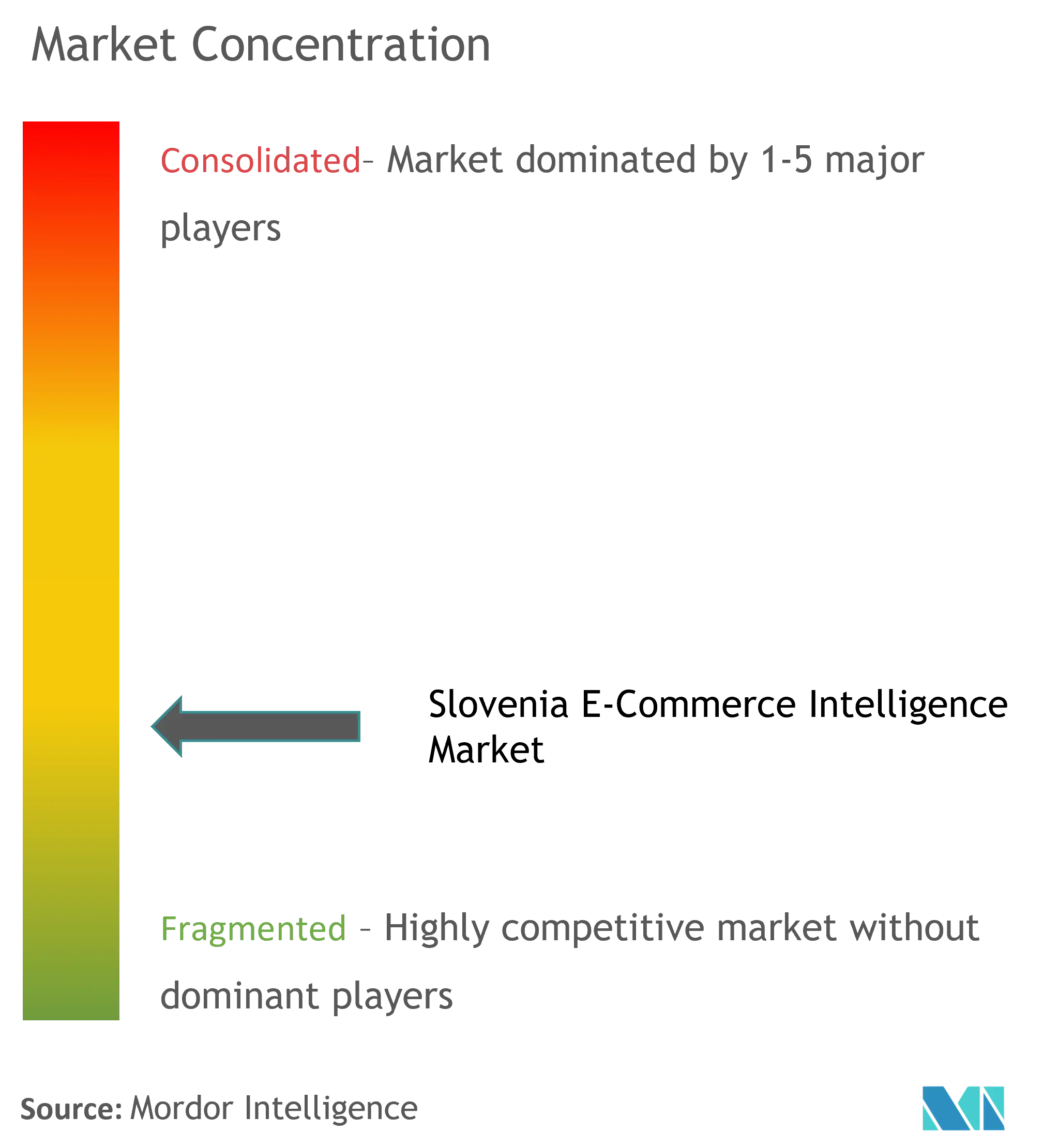
Slovenia E-commerce Market News
- November 2021 - Slovenia-based Leanpay has secured a financial boost of EUR 2.5 million from Lead Ventures for their Buy Now Pay Later (BNPL) payment solution. The young company has tripled its turnover this year, expecting to reach a final total of EUR 2.0 million, and is trusted by nearly 400 E-commerce stores. Currently offering an instant installment payment solution in Slovenia for E-commerce purchases, the young company is becoming a key player in the growing BNPL market.
- June 2021 - Zalando, Europe's key online fashion and leisure platform, has debuted in Lithuania, Slovakia, and Slovenia, providing clients with a diverse fashion selection and the Zalando convenience of delivery, payments, and returns. Zalando will expand to Croatia, Estonia, and Latvia this year, with Hungary and Romania following in 2022.
Slovenia E-commerce Market Report - Table of Contents
1. INTRODUCTION
1.1 Study Assumptions and Market Definition
1.2 Scope of the Study
2. RESEARCH METHODOLOGY
3. EXECUTIVE SUMMARY
4. MARKET INSIGHTS
4.1 Market Overview
4.2 Industry Attractiveness-Porter's Five Forces Analysis
4.2.1 Bargaining Power of Suppliers
4.2.2 Bargaining Power of Buyers/Consumers
4.2.3 Threat of New Entrants
4.2.4 Threat of Substitute Products
4.2.5 Intensity of Competitive Rivalry
4.3 Key market trends and share of E-Commerce of Total Retail sector
4.4 Impact of COVID-19 on the E-Commerce sales
5. MARKET DYNAMICS
5.1 Market Drivers
5.1.1 Companies focus on the development of mobile-friendly websites and apps
5.1.2 Surge in demand for E-commerce will continue even as the pandemic comes to an end
5.2 Market Challenges
5.2.1 Slovenia Buyers spend less money on expensive goods via online stores and e-commerce
5.3 Analysis of key demographic trends and patterns related to the E-Commerce industry in Slovenia (Coverage to include Population, Internet Penetration, E-Commerce Penetration, Age & Income etc.)
5.4 Analysis of the key modes of transaction in the E-Commerce industry in Slovenia (coverage to include prevalent modes of payment such as cash, card, bank transfer, wallets, etc.)
5.5 Analysis of cross-border E-Commerce industry in Slovenia (Current market value of cross-border & key trends)
5.6 Current positioning of Slovenia in the E-Commerce industry in Europe
6. MARKET SEGMENTATION
6.1 By B2C E-Commerce
6.1.1 Market size (GMV) for the period of 2017-2027
6.1.2 Market Segmentation - By Application
6.1.2.1 Beauty & Personal Care
6.1.2.2 Consumer Electronics
6.1.2.3 Fashion & Apparel
6.1.2.4 Food & Beverage
6.1.2.5 Furniture & Home
6.1.2.6 Others (Toys, DIY, Media, etc.)
6.2 By B2B E-Commerce
6.2.1 Market size for the period of 2017-2027
7. COMPETITIVE LANDSCAPE
7.1 Company Profiles
7.1.1 Mimovrste d.o.o.
7.1.2 Merkur Trgovina d.o.o.
7.1.3 Mercator d.d.
7.1.4 Big Bang d.o.o.
7.1.5 Lekarna Nove Poljane
7.1.6 LES-MMS trgovska družba d.o.o.
7.1.7 Zooplus AG,
7.1.8 Emundia d.o.o.
7.1.9 Moja lekarna d.o.o.
- *List Not Exhaustive
8. INVESTMENT ANALYSIS
9. FUTURE OUTLOOK OF THE MARKET
Slovenia E-commerce Industry Segmentation
The Slovenia E-commerce market is segmented in the B2C E-commerce segment; in B2C Commerce, it is segmented By Application (Beauty & Personal Care, Consumer Electronics, Fashion & Apparel, Food & Beverage, Furniture & Home, Others (Toys, DIY, Media, etc.) and B2B E-commerce. The different product types segment includes travel, tourism and sport accessories/equipment.
| By B2C E-Commerce | ||||||||
| Market size (GMV) for the period of 2017-2027 | ||||||||
|
| By B2B E-Commerce | |
| Market size for the period of 2017-2027 |
Slovenia E-commerce Market Research FAQs
What is the current Slovenia E-commerce Market size?
The Slovenia E-commerce Market is projected to register a CAGR of 7.5% during the forecast period (2024-2029)
Who are the key players in Slovenia E-commerce Market?
Mimovrste d.o.o., Merkur Trgovina d.o.o., Big Bang d.o.o., Petrol d.d. and Lekarna Nove Poljane are the major companies operating in the Slovenia E-commerce Market.
What years does this Slovenia E-commerce Market cover?
The report covers the Slovenia E-commerce Market historical market size for years: 2019, 2020, 2021, 2022 and 2023. The report also forecasts the Slovenia E-commerce Market size for years: 2024, 2025, 2026, 2027, 2028 and 2029.
Slovenia E-commerce Industry Report
Statistics for the 2024 Slovenia E-commerce market share, size and revenue growth rate, created by Mordor Intelligence™ Industry Reports. Slovenia E-commerce analysis includes a market forecast outlook to 2029 and historical overview. Get a sample of this industry analysis as a free report PDF download.
